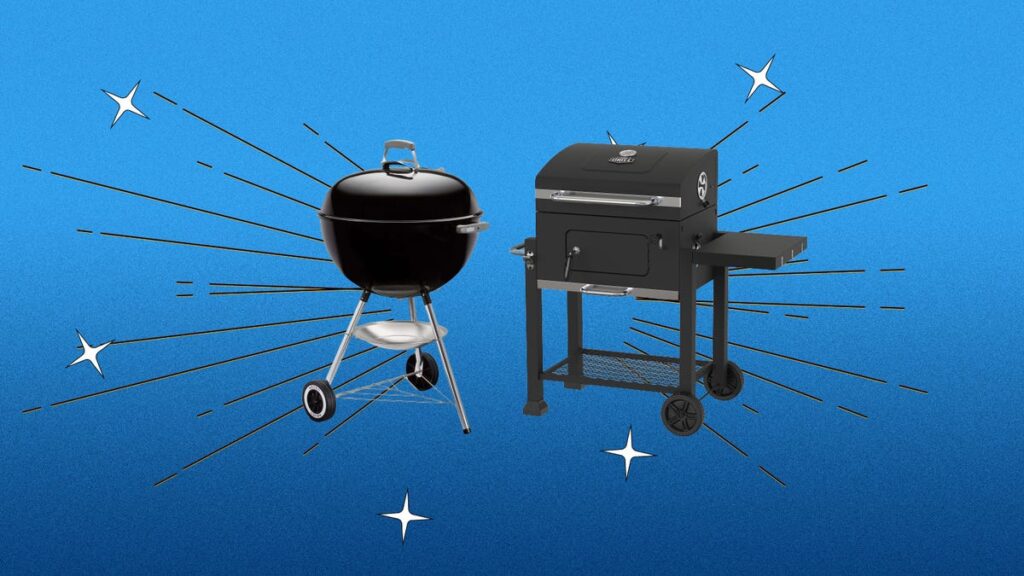We test the main types of grills differently, but for most, we include a high-heat test like searing steak or grilling burgers, a medium, indirect heat test like grilling a whole chicken for more than an hour and a low-and-slow test with racks of ribs. With over 30 grills tested, we’ve got this down to a tee. To determine what should be the best outdoor barbecue grill, we collect data including total cooking time, temperatures inside the grill and temperature inside separate pieces of meat. All that information helps us find where grills might have hot spots or thermometer inconsistencies.
- High heat test: Cooking 5.3 oz burger patties until they reach 145 degree internal temperature.
- Indirect heat test: Cooking a 5.5-pound chicken off the flames to 160 degrees.
- Low and Slow: Cooking a rack of pork ribs at 225 for 3 hours and taste testing.
Temperature consistency
I use the InfiRay P2 Pro to test how fast the grills heat up and if the heat is even. It only works as the grills heat up because the top temperature is too high, but it gives me a good idea of how well each grill spreads the needed heat. The InfiRay P@ allows me to take temperature readings at multiple points across the heating area for a better average result. I also use it to see if there is any major heat loss from other areas on the grill that may show poor quality builds.
We also use a stopwatch to determine how quickly the temperature drops over a one-minute interval when opening the lid. It’s an especially helpful test for smokers, where you may need to check the meat but don’t want to compromise the cooking time. I would always suggest using a meat thermometer” target=”_self to check the internal temperature of any food you are smoking, rather than opening the lid as they almost all lose around 100 degrees per minute.
Taste testing
There’s also a fair amount of (read: so much) taste testing, lively debate, and voting among our editors and families, in addition to the data we gather about grilling temperatures and cooking times. You might think it would be more fun than work to eat delicious food while discussing the merits of a grill, and you’d be right.
We don’t just taste test the three specific products in our temperature tests, as that wouldn’t give us a good spread. We choose products that people love to grill, including vegetables like corn, asparagus, and mushrooms, and meats like chicken legs, wings and steaks. When I can, I cook on multiple grills at once and keep a note on which products come from where. Then I ask my testers which they like the most. This is the least objective of the tests, but it is helpful in a real-world way. If the food just doesn’t taste good, then that grill likely isn’t doing a good job.
If you’re interested in any particular method of testing, we have a dedicated how we test page, plus our recommendations for cooking with kamado grills, portable grills and charcoal grills ready for your perusal. Happy grilling.
Read the full article here

